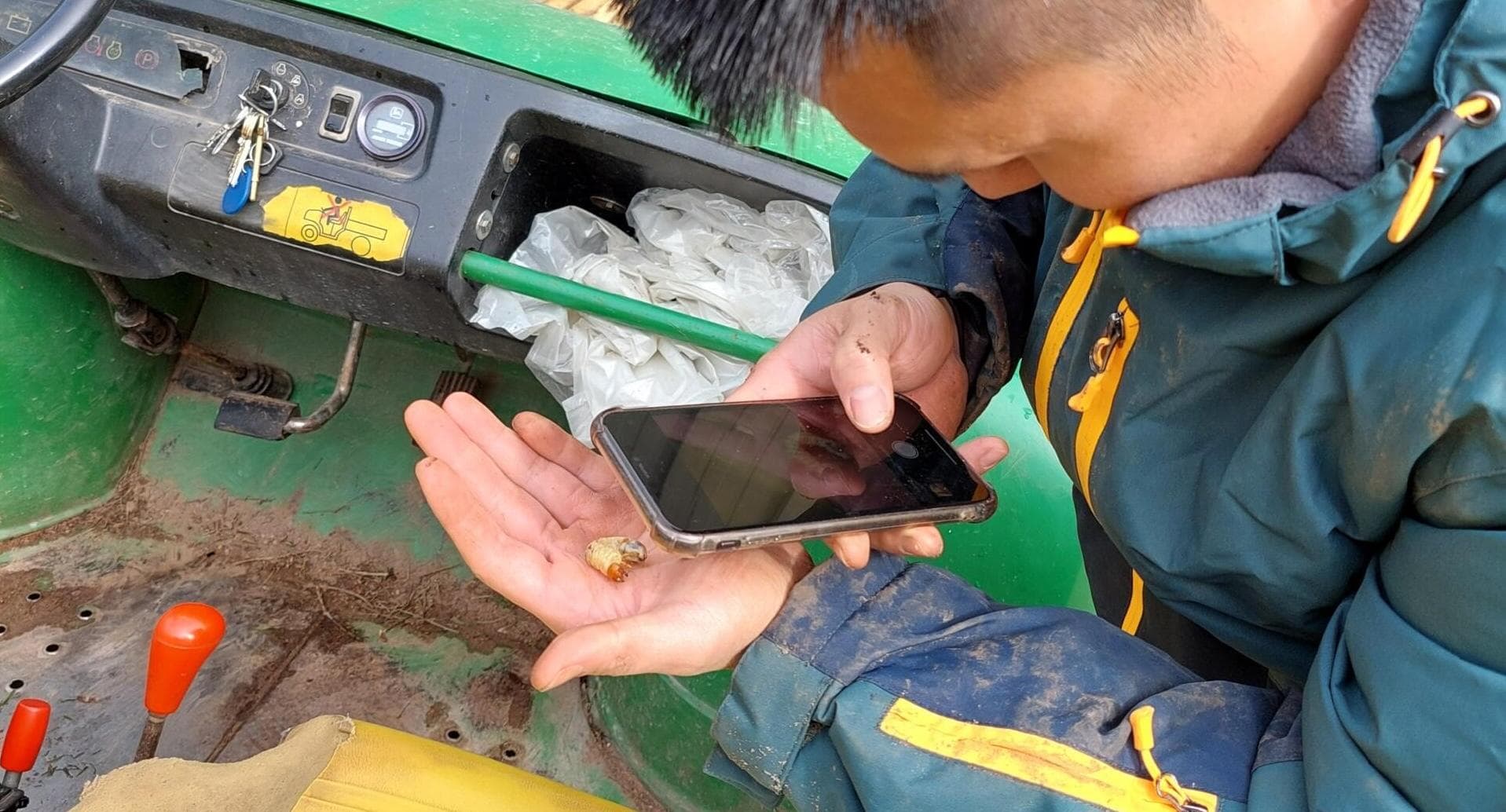April 9th we dug up some areas of fairways to take a chafer grub count from a trial we sprayed July 2023.
To see more details on the trail set up read that blog here.

The results are in, and Glenn and I run through them in a video below.
Let us know if you like that format and we’ll try and do more in the future.
We’ve got lots of data on the success of Acelepryn followed by Nematrident B (nematodes) Vs chafer grubs, but it’s great to be able to add a UK field trial on a golf course to that.
Lot’s of factors to think about to get application success with nematodes in the summer:
- Soil temperatures 12°C+
- Irrigation or rainfall post application
- White nozzles
- Remove filters before spray
- Soils remaining moist for 2 weeks after spray
To name but a few.
I enjoyed being on the ground for the spray day last year to see the challenges as they came up.
Like all applications its always a conscious compromise, but overall the spray went well and hopefully you’ll agree that’s reflected in the results.

As discussed in the video (hope you enjoyed) the results show a clear trend in line with the other studies we’ve conducted, that the smaller the larvae are (first year post hatch) the more affected they are by the treatments.
Grubs which have had more time to build up fat reserves (later instars which have had time to grow) are still controlled, but less consistently.
We can see the largest grubs in the graph above (grey), the ones which would be getting ready to become adults later this summer, prove harder to control so a programmed approach may be necessary year on year for some susceptible areas.




